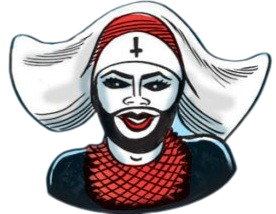cross‐posted from: https://lemmygrad.ml/post/695985
Estimating the number of homosexual men in the SA or any right‐wing group is extremely difficult because as Theweleit so accurately determines, “In the absence of statements from fascist men directly involved in sexual relationships with other men — it is impossible to determine the nature of those relationships in any detail.” However, there is reason to believe that there was a notable amount of homosexual presence in Volkisch parties, including the NSDAP.
In a 1926 survey done by The League of Human Rights, a homosexual rights advocacy group based in Berlin, about 3% of the more than 30,000 male members of the League said they were members of far‐right völkisch parties (including the Nazis). 21% said they belonged to the conservative DNVP (Deutschnationale Volkspartei; originally a conservative monarchist party that in the later Weimar period aligned itself more closely to radical far‐right parties like the NSDAP).
Furthermore, there were some homosexuals in SA leadership whose sexual orientation was an open secret in the [NSDAP] for a long time, most notable of which were the SA co‐founder and commander Ernst Röhm, Edmund Heines (Röhm’s deputy), and Gerhard Rossbach (an associate of Röhm who supplied early SA troops with their signature brown shirts).
[…]
As demonstrated, the SA’s balancing act depended on its homosexual members keeping their proclivities a secret, giving the organization plausible deniability against accusations of harbouring homosexuals.
It is interesting to note that these men were critical of how activists such as Magnus Hirschfield promoted gay acceptance. On the contrary, gay fascists thought that they should earn heterosexuals’ acceptance by proving that they were just as manly — if not more so — than the ideal straight man. In short, whereas some gay men opposed the neopatriarchy, gay fascists sided with it.
As for queer women, I know only of the cases of Ruth Roellig and Violette Morris. The latter gained the Fascists’ interest as early as 1936 and later collaborated with the French Gestapo. She had access to black market goods and she transported Axis officials. There are also rumors that she committed her own atrocities, but these remain unconfirmed.
ETA: Quoting Régis Schlagdenhauffen in Queer in Europe during the Second World War, pages 32–34:
The enlistment of homosexuals in the Wehrmacht shows the régime’s ambiguous attitude towards homosexuals. We have very few eyewitness accounts of this matter to date. It was mainly from 1944 onwards that this recruitment took place, because of the considerable losses at the front. In his memoirs Pierre Seel (1994) was one of those detainees incorporated into the Wehrmacht by force after having spent time in a camp. He is no exception.
Several cases support the hypothesis that homosexuals were incorporated into the disciplinary units of the Wehrmacht or the Dirlewanger brigade of the SS (Ingrao 2006). Known for the cruelty of its members, this special unit was named after its commander, Oskar Dirlewanger. According to Christian Ingrao this SS unit committed the worst atrocities of the Second World War. As of 1943 it comprised five companies, two of which were made up of men recruited in the camps.³⁴
According to Klausch, homosexuals from the camps were used to flesh out the Dirlewanger brigade (1993: 75–6).³⁵ Apart from Dr. Pistor, a certain Anton V. who was released from Sachsenhausen on 31 May 1944 was enlisted in the Dirlewanger brigade (Müller and Sternweiler 2000: 51). So was a Hermann Fries, released on 15 March 1944 to be enlisted in a probation company of the Wehrmacht.
Some of the soldiers assigned to this type of army corps came from the police and the SS — particularly men who had been found guilty of homosexuality. This raises questions as to the official position of the army on the presence of known homosexuals within its ranks. As early as 1937 Himmler declared his intention to eradicate homosexuality from the SS. He ordered homosexuals to be publicly humiliated and thrown out of the SS, taken to court and then, once they had served their sentence, sent to a concentration camp.
In Sachsenhausen for example, eight detainees were registered under the code “SS‐SK 175”, which stood for SS assigned to a disciplinary unit for homosexuality. Although Himmler ordered men accused of homosexuality to be treated with the utmost severity, the practical application of that order was left to the discretion of the SS judges (Giles 2002).
Things changed from 15 November 1941, the date of application of a secret decree for the preservation of the SS and the police. Thereafter any agent found guilty of an “unnatural” relationship with another man was to be sentenced to death.³⁶ Historian Michael Schön (1996) has looked into the case of four police officers executed under this decree. They were arrested and put to death in the last days of the war.
According to the archives, on 24 April 1945 the police high command ordered the pardon and release of all prisoners in the Berlin‐Spandau police district because of the advance of the Red Army. All, that is, except the four police officers accused of homosexuality (ibid.). The order was to have them executed that very day, by virtue of the decree for the preservation of the police and the SS.
The precise reasons for such haste remain unclear, for according to Klausch (1993) this type of case is exceptional in so far as the judges of the court martial, since October 1943, had pronounced themselves in favour of incorporating police and SS officers found guilty of homosexuality into the Wehrmacht. The judges of the court martial distinguished three levels of homosexual offences:
- minor cases of homosexuality, where there was no likelihood of the offence being repeated: the guilty party was to be assigned to a special unit;
- slightly more serious cases, where a repeat offence could not be ruled out: the sentence could be served in the special Dirlewanger brigade of the SS;
- serious cases: the guilty party was to be sentenced to imprisonment and public humiliation.
In late 1943, when the Wehrmacht was suffering colossal losses, it was decided that men convicted of homosexuality in the SS would immediately be enlisted in the Wehrmacht (ibid: 96). As early as 1936, the Wehrmacht had found its own solution for recycling its homosexuals: they were incorporated in the disciplinary battalions, the 500th Probation Battalion (Bewährungstruppe). During the war these battalions numbered over 33 000 men, mostly enlisted by force, and men released from concentration camps.³⁷
According to Klausch, there are two explanations as to why homosexuals were enlisted in these troops — and more generally in the army. On the one hand, “it was considered that many of the men convicted under paragraph 175 could be cured of their homosexuality and brought back to heterosexual normalcy through reeducation” (ibid.: 24).
And secondly, to quote the surgeon‐general of the armed forces, if homosexuals were excluded from the army, “these psychopaths would see it as a gift and it would soon become an excuse for anyone who wanted to dodge their military obligations” (ibid.: 24).³⁸ This gives us a better idea why homosexuals were treated as they were, in the camps or the police forces, during the Second World War.
The eventual willingness to let queer men fight alongside straight ones coincided with the Axis’s eventual willingness to let women and children fight alongside men — who could now enlist regardless of age. This was by no means an act of compassion: the Axis was on its last legs, so Realpolitik became the order of the day.
Goodass pride month post !
This has been brought up a few times and idk why is keeps need to be mentioned. Probably because we’re in the middle of another culture war, red scare and Lavender scare.
In conservative circles they use Hitler’s circle or Holocoqust denial (denial of severity of the persecution of queers or erasure of it) as a root to try to paint all gay men /queer people as inherrently evil and predatory. It would be suprising if they try to do this again.
There is a notorius discredited book called The Pink Swastika by Scott Lively cw extreme queerphobia. It greatly exaggerates queers in the Nazi leadership. The book was used by conservatives to justify queephobic laws and discrimination.
The authors of the book are Kevin Abrams, and Scott Lively, an American right-wing activist who worked for Oregon Citizens Alliance (loosely affiliated with the Christian Coalition of America) and Abiding Truth Ministries. Lively is best known for his international anti-gay activism; he campaigned for the Russian gay propaganda law and his 2009 tour in Uganda was one of the motives for Uganda’s so-called “Kill the Gays” bill. The book was published after Measure 9, an unsuccessful Oregon ballot measure to repeal gay rights.
SLPC ANTI-GAY RELIGIOUS CRUSADERS CLAIM HOMOSEXUALS HELPED MASTERMIND THE HOLOCAUST
The myth that Nazis condoned or promoted homosexuality sprang up as a slander against Nazi leaders by their socialist opponents in the 1930s. Only one of the half-dozen leaders in Hitler’s inner circle, Ernest Rohm, is believed by credible historians to have been gay.
The “gay Nazi” slander stuck, though, partly because German laws against homosexuals remained in place for a quarter of a century after World War II ended. That effectively silenced many homosexual victims of the Holocaust from telling their stories. A landmark survivor’s memoir, The Men With the Pink Triangle, began to break that silence in 1972.
There is no question that the Nazis saw homosexuality as one aspect of the “removed” they were determined to extinguish. When it came to power in 1933, the Nazi Party moved quickly to strengthen Germany’s existing penalties against homosexuality. On Oct. 11, 1936, Hitler’s security chief, Heinrich Himmler, went further, announcing that homosexuality was to be “eliminated” in Germany, along with miscegenation between the races.
In 1942, the death penalty was instituted for homosexuality. Offenders in the German military were routinely shot. “That wasn’t a punishment,” Himmler explained, “but simply the extinguishing of abnormal life. It had to be got rid of, just as we pull out weeds, throw them on a heap, and burn them.”
Yasamin Jameh (the author) almost mentioned that work of pseudohistory when she wrote ‘now widely‐debunked myth was that homosexuals themselves were behind the rise of the Nazi movement’. Unlike Lively, Jameh discusses the matter of homosexual fascists in good faith and actually attempts to explain why some gay men sided with their oppressors.
I have to say that I am pleasantly surprised by the feedback that this thread has received. I was thinking that some would have been irritated to see this subject since it was an embarrassing time in LGBT+ history, but discomforting others wasn’t my goal. Proletarians, and perhaps especially LGBT+ ones, should beware of queer folks who either join or try to win over their oppressors. That doesn’t mean that heterosexism or cissexism against them is acceptable, but they don’t deserve unconditional support either.
My hot take: gay fascists, and really all fash who contradictorily are/do things fash don’t usually like, really are just there because despite all its moralizing fascism is a nihilistic-hedonistic ideology. Fash don’t really believe in all that purity crap, they ideology is might=right, and if you’re mighty enough you can do whatever you want, even crap you just told other people not to do. So I think gay fascists are just sadists who figure if they’re tough enough the other fascists will give them a pass and they can get away with whatever sick shit they want, and often they’re right.




